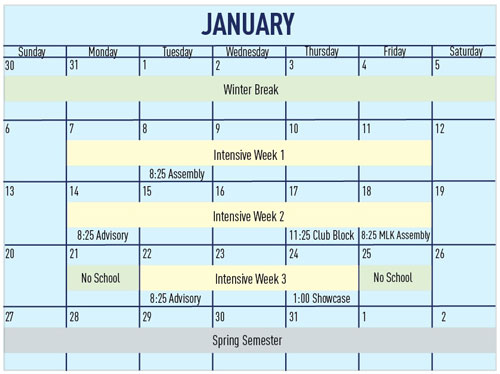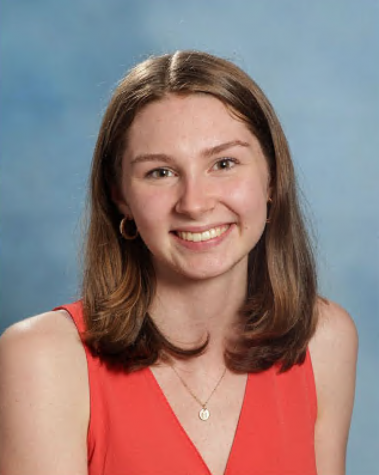Introducing Intensives
Students should anticipate a change of pace in classes following winter break

Photo: Beatrice Cappio
When students return from winter break, they will take three-week intensive classes before second semester begins. While the school day will start and end at the same time, students can expect many things to look different. Community Time will be held fewer times, either in the morning or before lunch.
When University Prep students return from winter break, classes will look different for three weeks. Between Jan. 7 and 24, students will engage in new internsive classes — from East Asian History to Mobile Apps for Social Change — pursuing depth in one particular area of study full-time.
Intensives, which will also take place during the month of May after the end of the second semester term, are meant to accommodate different learning styles.
Assistant Head of School for Academics Richard Kassissieh identified the need for a change in course programming after analyzing the current curriculum.
“When we step back and look at our program from a little bit of a distance, we recognize that going from class to class — four classes a day, 70 minutes each — works for some kinds of learning and not for others,” Kassissieh said.
To address this opportunity for growth, the intensive program, spearheaded by Kassissieh, will aim to create a unique learning experience for students.
“Intensives are an opportunity to learn in a different way,” he said. “The intensives are designed to create more memorable learning experiences.”
According to art teacher and intensive committee member Ty Talbot, the intensive model has proven to be effective at other schools across the country.
“It’s something that has precedent,” he said. “The Hawken School in Ohio has done this for 10 years. Colorado College is famous for all of their courses being in this model.”
Despite the drastic changes to the typical multi-course format during the new term period, Kassissieh explained that developers sought to maintain key components of the school day.
“We started from the assumption that we would only change what needed to change because people are used to a certain routine,” he said.
According to Kassissieh, days of the new term will start and end at the same time of day, sports will continue and the Commons Cafe will open.
From there, Kassissieh stated, the design committee determined how the intensive period would best fit into the normal schedule’s mold.
Along with the design of courses, Community Time will also look different. The usual Community Time blocks will only occur a few times due to the nature of the courses offered.
“One reason why we decided to do this is that about a third of the the student body will be off campus on any given day, so Community Time changes a little bit when not everybody’s there,” Kassissieh said.
In place of community building activities typically reserved for these time blocks like advisory, Kassissieh expects intensives to bring unique opportunities for student camaraderie.
“The intensives will have their own sense of community,” he said. “It’s your cohort … for a full three weeks so we feel like there will be sense of community within that.”
Looking ahead, Kassissieh is excited that UPrep has moved to integrate new models of learning into the usual course offerings.
“I’m really proud of the school for being willing to innovate in a thoughtful manner [and] to always think about what’s the most powerful way to learn,” he said.
Your donation will support the student journalists of UPrep.

